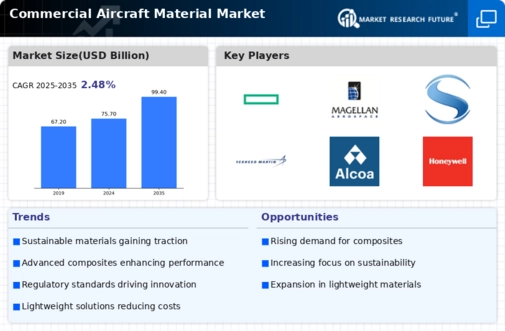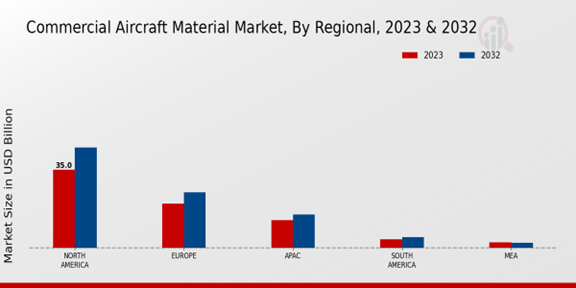The Commercial Aircraft Material Market is a crucial sector comprising various materials that are integral to aircraft construction and efficiency. This market is characterized by the continuous evolution of material technology aimed at enhancing aircraft performance, durability, and weight reduction. Competitive insights within this domain indicate a robust engagement among key players who are investing heavily in research and development to innovate advanced materials such as composites, aluminum alloys, and titanium derivatives. The market is influenced by factors like increasing air travel demand, regulatory standards for safety and fuel efficiency, and advancements in manufacturing processes.
Companies operating in this landscape strive to establish partnerships and engage in strategic collaborations to leverage economies of scale and maintain a competitive edge, further intensifying the market dynamics.Hewlett Packard Enterprise, while primarily recognized for its prowess in technology and computing solutions, also plays a significant role in the Commercial Aircraft Material Market through its advanced management systems that support material traceability and quality assurance in aircraft manufacturing. The company leverages innovative data management techniques and analytics to streamline processes, enhance supply chain efficiency, and ensure compliance with stringent aerospace safety standards.
By focusing on optimizing manufacturing operations and improving lifecycle management, Hewlett Packard Enterprise helps aerospace manufacturers achieve greater efficiency and cost-effectiveness in the utilization of materials. The company's commitment to sustainability and eco-friendly practices also resonates well within the industry, as it strives to provide solutions that contribute to the overall reduction of environmental impacts associated with aircraft manufacturing.Arkema is recognized as a key player in the Commercial Aircraft Material Market, specializing in high-performance materials and specialty chemicals that cater to the aerospace industry's specific requirements.
The company's product offerings include advanced thermoplastics and resins designed for use in high-stress and lightweight aerospace applications. Arkema's innovation capabilities are built on a strong foundation of research and development, enabling it to deliver materials that not only meet but exceed industry standards for safety, weight, and performance. Furthermore, Arkema's strategic focus on collaborative development with aerospace manufacturers demonstrates its understanding of evolving market demands.
By positioning its products effectively and fostering strong relationships with industry stakeholders, Arkema has established a significant market presence in the commercial aircraft materials landscape, aiming to contribute to the future of aerospace technologies through its cutting-edge materials.














